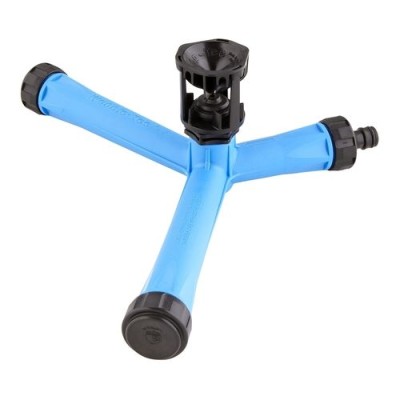We share a helpful fertilising tip that will remind you when to fertilise your lawn!
But first, why should I fertilise my lawn?
Fertilisers contain a mix of essential nutrients that your lawn needs to stay healthy and thrive. As our soils usually don’t contain all these nutrients a fertiliser is required.
By giving your lawn a boost of nitrogen, phosphorus and potassium, the lawn will be able to grow faster, will improve in colour, have better root establishment, and improve the health of your lawn.
Fertilising your lawn at specific times of the year will allow you to see the full benefit and nutrient uptake. We recommend fertilising your lawn 3 to 4 times a year.
Fertilising Tip for Autumn
A fertilise in autumn will help your lawn repair from stresses over summer and repair itself faster. Fertilising now will also help prepare your lawn for the cooler months by extending your lawns colouring and encouraging growth.
In most areas you can use the Easter long weekend as a guide as to when to fertilise your lawn enters the cooler months in its best health.
If you didn’t get the chance to fertilise your lawn this Easter, don’t fret it’s not too late to do it now!
Fertilising Tip for Spring
Spring is another important time to fertilise as the grass will start to grow faster as the weather begins to warm up. When fertilising in spring, timing is key! Apply too early and you won’t get the full benefit of the nutrient uptake of an actively growing lawn. Your lawn will start to actively grow when soil temperatures rise above 14 degrees Celsius. However, it is not until the soil temperature is consistently this for it to be actively growing.
We recommend using the October long weekend as a guide for when this is most likely to happen. For Western Australia, Victoria, Northern Territory and Tasmania who celebrate Labour Day earlier in the year, use early October as a guide.
Fertilising in Summer
Fertilising in summer will help your lawn maintain an even growth pattern. Summer fertilising will help your lawn improve its colour and will help reduce stress caused to your lawn over the hotter months.
We recommend using the Australia Day long weekend as a guide to fertilising your lawn in summer.
What should I fertilise with?
When fertilising we suggest using a slow-release granular fertiliser such as Lawn Solutions Premium Fertiliser. A slow-release fertiliser will release a small amount of nutrients over a longer period for a more consistent nutrient uptake.
We also suggest using a granular fertiliser as they are easy to apply to the lawn either by hand or using a fertiliser spreader.
When using granular fertiliser, it is important to make sure that you water the granules in really well into the soil profile to help avoid leaf burn.
How to apply a granular fertiliser
When using a granular fertiliser, it is important to avoid over fertilising your lawn and spread the granules evenly throughout.
To ensure you are not over fertilising your lawn, read and follow the application rate on the product you are using. Then you will need to measure out how much of the product you will need for your lawn size.
To you spread fertiliser evenly, we recommend using a fertiliser spreader. This will help stop over fertilising areas which can result in uneven growth and colouring. It is best to use a systematic approach of walking back and forth to cover the area evenly.
Do I need to fertilise in winter?
When choosing a fertiliser for winter, you need to look at what your lawn needs to stay healthy in the cooler months. The key components to look out for when fertilising in winter are Potassium and Iron. Potassium will aid in the plants’ cell function and strength. Iron will help improve leaf colour and strength.
If you have fertilised in autumn and prepared your lawn well for the cooler months, your lawn can go without a fertilise till spring. However, if you haven’t, you can fertilise in winter.
ColourGuard Plus
ColourGuard Plus is a natural grass pigment that contains a liquid fertiliser component. This will instantly improve your lawns colour for up to 3 months, while giving the lawn a fertilise at the same time.

For more information, check out our other fertilising blogs here.


